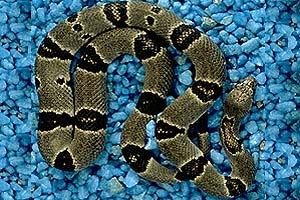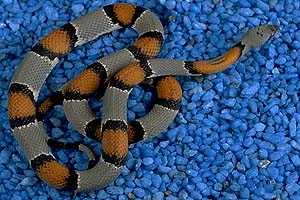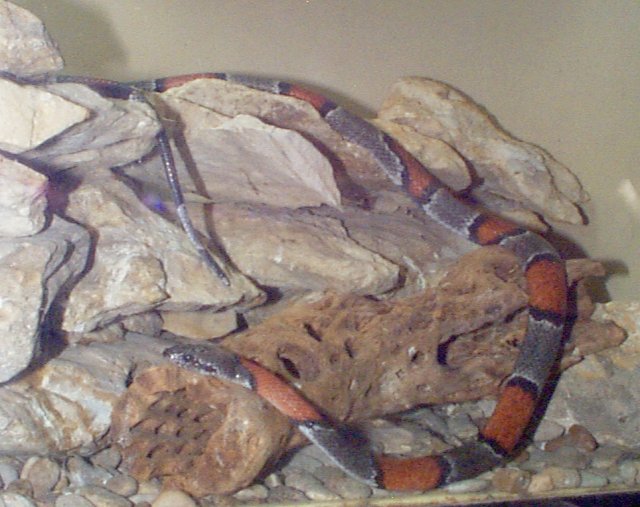
Picture by: Wayne Howell and Jeff Necessary
The Gray-Banded King snake is usually about 3 feet long and has beautiful array of colored stripes. The snake has broad gray bands surrounded in smaller black bands that are outlined in a single row of white scales. Some Gray-Banded King snakes have been seen with red stripes between the black bands.
The Gray-Banded Kingsnake is a solitary snake that is primarily nocturnal. It is not seen alot because of its nocturnal nature.
During the long periods of drought that the southern summers often bring, the Gray-Banded Kingsnake retreat to there underground home to prevent dehydration.

Picture by: Wayne Howell and Jeff Necessary
The Gray-Banded Kingsnake usually lays around 4 to thirteen eggs. The Kingsnakes breed after their winter hybernation and the breeding process takes about 30 days to produce the eggs. The hatchlings range in size from 7 to 12 inches long.

Brad Schilder
mail to: bSchilder@rammail.txwes.edu
Sources and Links:
Conant, Roger. A Field Guide to Reptiles and Amphibians.© 1975 Library of Congress Catalog Publication Data.
Eichhorst, Tom. Lampropeltis Alterna--Gray-Banded Kingsnake.
URL: http://coloherp.org/cb.news/cbn-0101/LAterna.html.
Forks, Joe. Gray-Banded Kingsnakes Lampropeltis alterna. URL: http://www.kingsnake.com/king/alterna/alterna.html
VMS Professional Herpetoculture.©2000. URL: http://www.vmsherp.com/CarePages/CareAlterna.htm